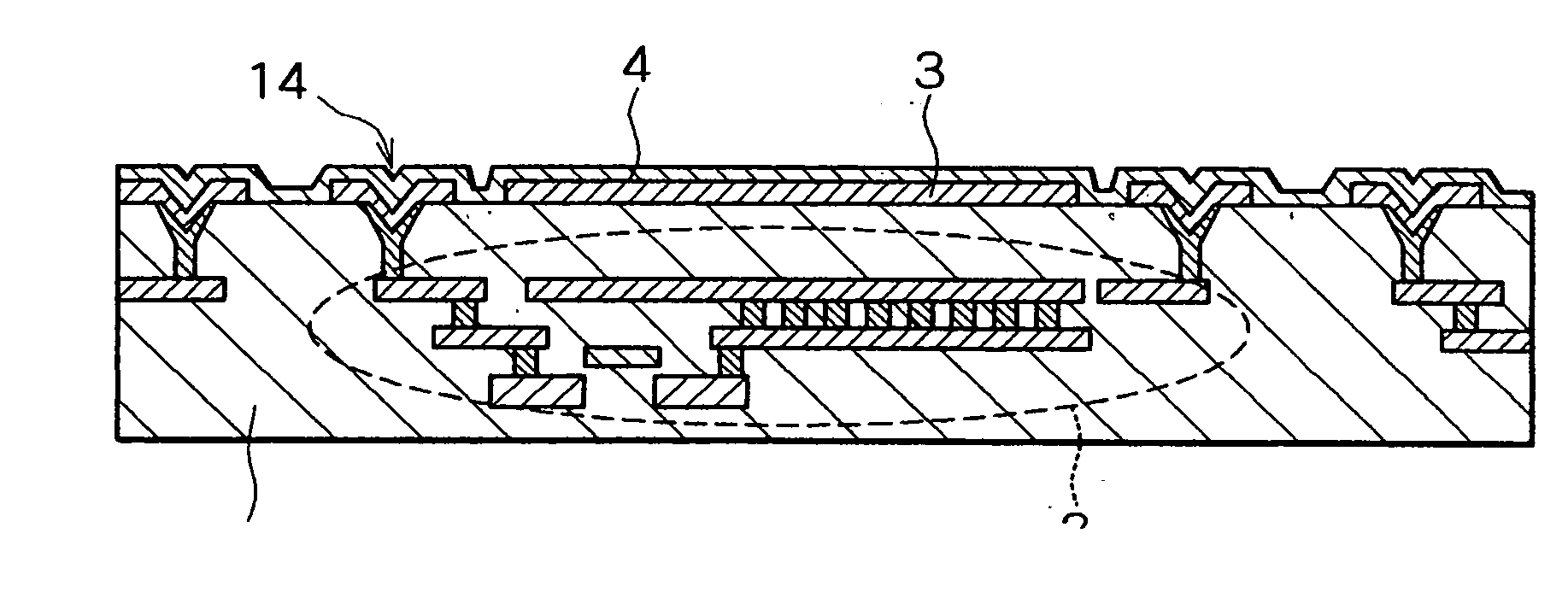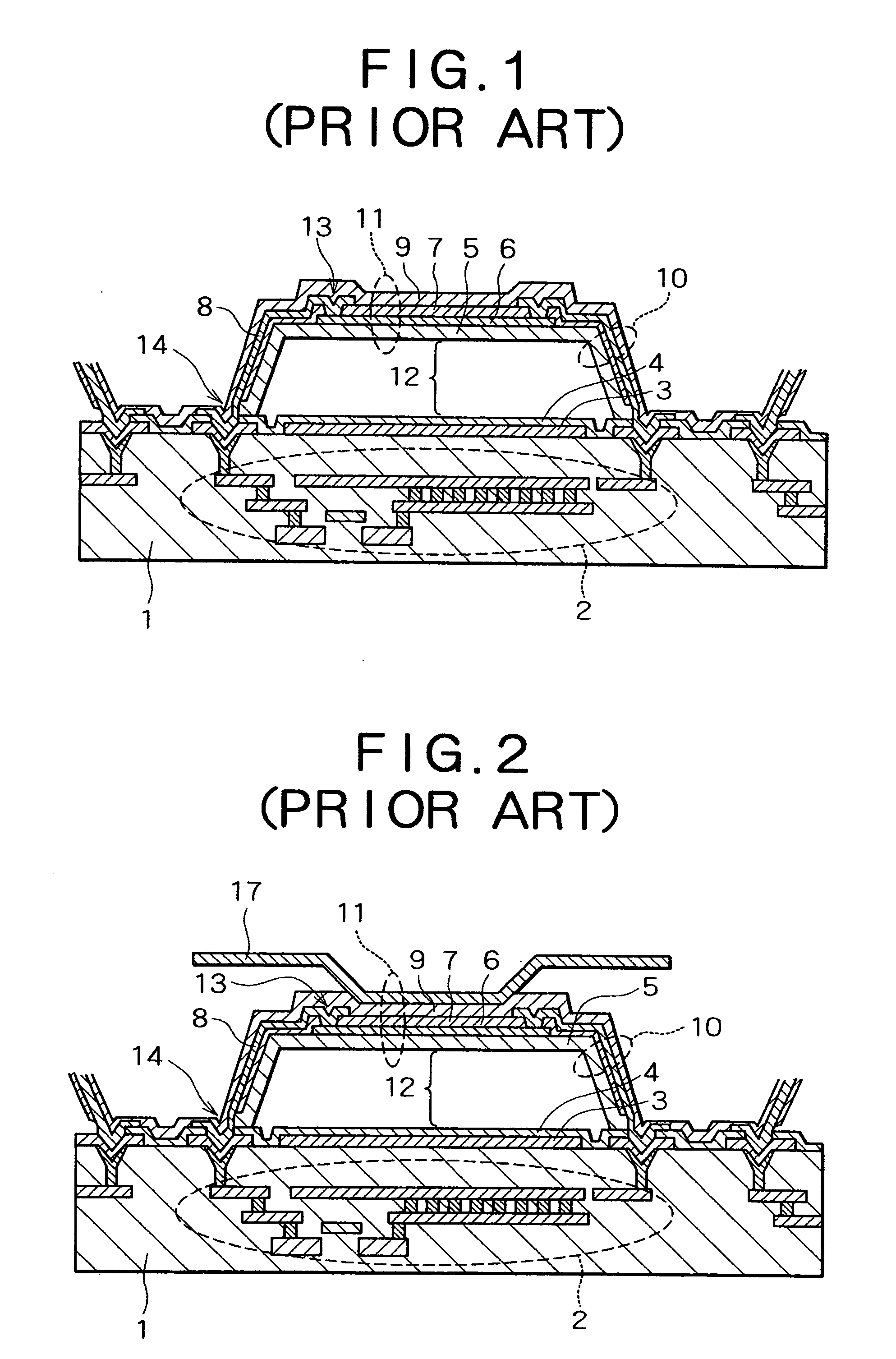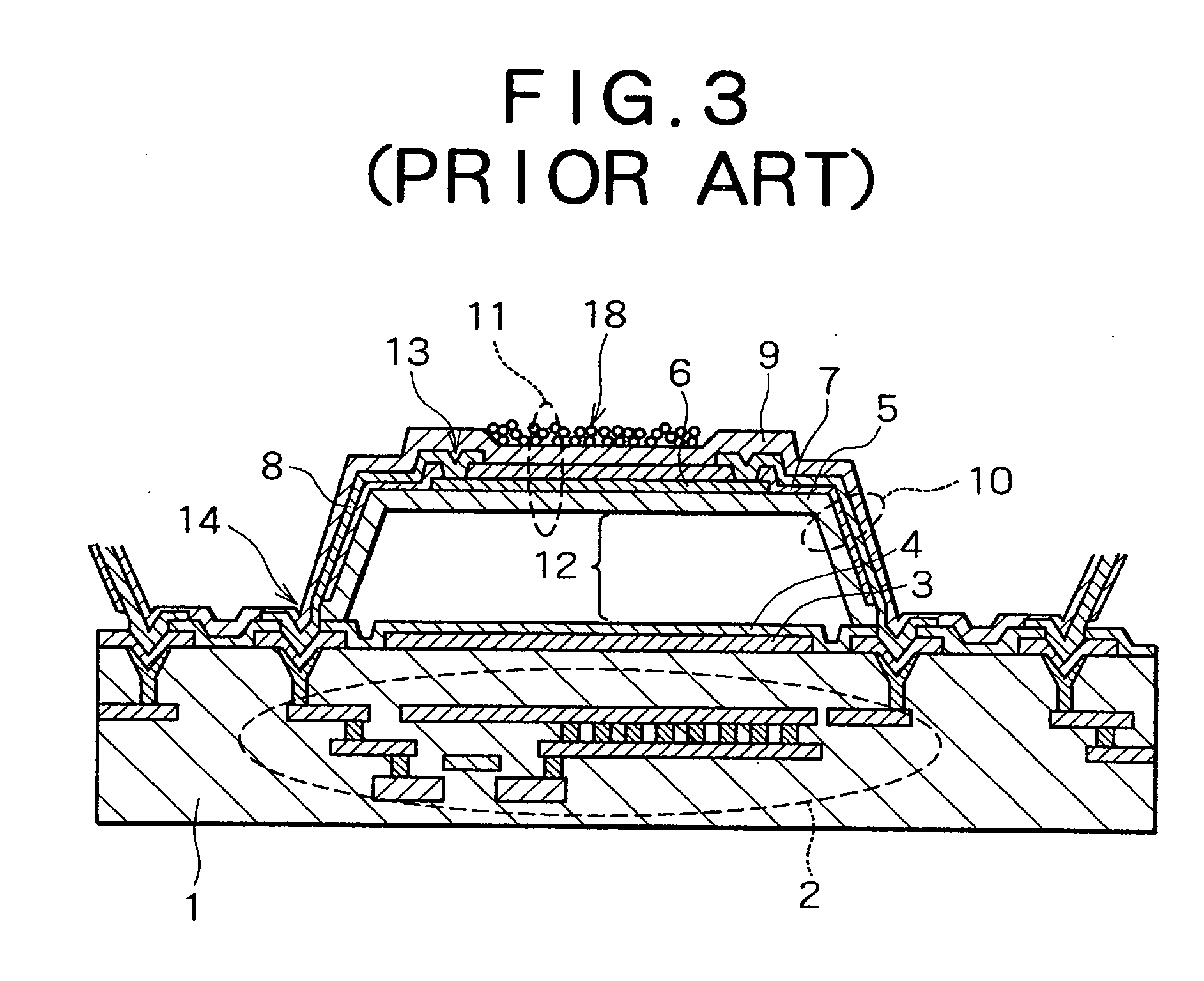Thermal-type infrared detection element
- Summary
- Abstract
- Description
- Claims
- Application Information
AI Technical Summary
Benefits of technology
Problems solved by technology
Method used
Image
Examples
first embodiment
[0035] The thermal-type infrared detection element according to the present invention will first be described with reference to FIGS. 4 through 16. FIG. 4 is a sectional view in which one pixel of the thermal-type infrared detection element of the present embodiment is depicted in alignment with the current path; FIG. 5 is a schematic plane view showing the structure of the convex pattern; and FIG. 6 is a perspective view of the same. FIG. 7 is a sectional view showing variation in the convex pattern; and FIGS. 8 through 15 are sectional views showing the sequence of steps in the method for manufacturing the thermal-type infrared detection element according to the present embodiment. FIG. 16 is a sectional view showing another structure of the thermal-type infrared detection element according to the present embodiment.
[0036] In the thermal-type infrared detection element of the present embodiment as shown in FIG. 4, an infrared reflection film 3 composed of Al, Ti, W, or a silicide ...
second embodiment
[0057] The thermal-type infrared detection element according to the present invention will next be described with reference to FIGS. 17 through 21. FIG. 17 is a sectional view in which one pixel of the thermal-type infrared detection element of the present embodiment is depicted in alignment with the current path; FIG. 18 is a schematic plane view of the structure of the concave pattern; and FIG. 19 is a perspective view thereof. FIG. 20 is a sectional view showing variation in the shape of the concave pattern; and FIG. 21 is a sectional view showing another structure of the thermal-type infrared detection element of the present embodiment.
[0058] The convex pattern 15 was formed on the side of the photoreceptor 11 that is irradiated with infrared rays in the first embodiment described above, but incident infrared rays can be scattered and prevented from reflecting if the surface is not flat, and since the heat capacity of the photoreceptor 11 increases by an amount commensurate with...
PUM
 Login to View More
Login to View More Abstract
Description
Claims
Application Information
 Login to View More
Login to View More - R&D
- Intellectual Property
- Life Sciences
- Materials
- Tech Scout
- Unparalleled Data Quality
- Higher Quality Content
- 60% Fewer Hallucinations
Browse by: Latest US Patents, China's latest patents, Technical Efficacy Thesaurus, Application Domain, Technology Topic, Popular Technical Reports.
© 2025 PatSnap. All rights reserved.Legal|Privacy policy|Modern Slavery Act Transparency Statement|Sitemap|About US| Contact US: help@patsnap.com



